Photo

New Post has been published on https://fitnesshealthyoga.com/young-people-developing-horns-on-their-heads-because-of-their-phones/
Young People Developing Horns On Their Heads Because Of Their Phones

Somehow, this is a real thing.
If you noticed you’ve got some fresh horn-like growths growing on your head, you should probably give your doctor a call. However, you’re likely not alone because according to a new report, young people around the world are developing growths on their skulls and it’s all because of the way they’re holding their cell phones.
There’s a pretty decent chance that you’re reading this article right now on your phone. If you are, pay attention because you don’t wanna wake up in the morning looking like an antelope. The Washington Post is reporting that more and more people are complaining about their skulls forming incorrectly, leaving youths with bumps on their heads. If you were curious and wanted to see people walking around with devil horns implanted on their temples, you’ll be disappointed because the growths are actually near the back of the skull. The reported reason why this is happening was medically explained in the original report. “Bone spurs [are] caused by the forward tilt of the head, which shifts weight from the spine to the muscles at the back of the head, causing bone growth in the connecting tendons and ligaments.”
Apparently, bone growth can be halted by simply improving your posture. So, if you’re one of the people who’s got horns on your skull, sit straight and spend less time on your phone if you can.
The moral of the story is that if you’re always on your phone, fix your posture! You don’t want to wake up with spikes on your head…
[via]
Source link
#bone spurs#breaking news#cell phone#cell phones#health insurance news usa#health news united states#healthcare news usa#horns#Hot New Hip Hop#News#phone#Reviews#skull#Society#texting#Young People Developing Horns On Their Heads Because Of Their Phones#Health News
0 notes
Photo

New Post has been published on https://fitnesshealthyoga.com/fighting-ebola-is-hard-but-in-the-congo-mistrust-is-making-it-harder/
Fighting Ebola is hard but in the Congo mistrust is making it harder
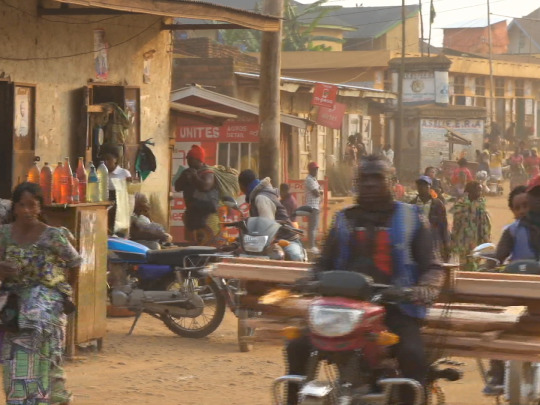
As the disease latched onto families and spread through tightly packed neighborhoods, rumors began spreading of organ harvesting and political conspiracies, even as more people got sick and died.
When the ambulances came to take people away – they would never see them again.
So instead of going for treatment, many stayed at home and died, their bodies still highly contagious and deadly for the family members who buried them.
“Fear prevents good management of the epidemic. Fear makes it difficult to break the chain of transmission. What was needed was to break the fear,” says Zongwe.
It’s this extreme mistrust, along with simmering conflict and what many responders on the ground believe has been a flawed response, that has allowed the world’s second-biggest Ebola outbreak on record to continue unabated more than 10 months after the first cases were found.
Despite millions of dollars in funding, and an effective experimental vaccine, Ebola is spreading to new parts of Congo’s North Kivu and Ituri provinces and re-infecting areas thought rid of the virus. This month, it also made the long-feared jump across the border to neighboring Uganda, though at this stage those isolated cases appear to be contained.

A conflict the world forgets
Butembo’s residents live at the frontier of a conflict that the world often forgets.
Hemmed in by multiple armed groups that commit repeated atrocities and harassed by the national military frequently accused of human rights abuses, they are famously and understandably distrustful of newcomers.
Earlier this year, unknown assailants destroyed Ebola treatment centers in Butembo. In April, a World Health Organization epidemiologist was killed in an attack on the University Hospital. In total there have been 130 attacks on health facilities between January and mid-May, causing four deaths and injuring 38.
Because of these security concerns, the White House barred world-renowned specialists of the US-based Centers for Disease Control from setting up a base in the heart of the epidemic (although it does have staff based in the regional capital Goma.) Similarly, Doctors Without Borders (Medecins Sans Frontieres) closed its treatment centers in some Ebola-hit areas and retreated to Goma.
Faced with an epidemic that is out of control and continued violence targeted at the response, health authorities are urgently searching for a different strategy to stop Ebola.
“During the first seven months of the epidemic we had more than 1,000 cases, now we have more than more than two thousand cases in a very short time,” says Antoine Gauge, a response specialist with Doctor’s Without Borders (MSF).
A draft internal World Bank assessment on the response from late May seen by CNN, describes the mounting shock at the rising death toll.
“Alarmed by the huge and unexpected surge in recent months in the number of new cases, a number of aid agencies and implementing partners have expressed concerns over many aspects of the response,” it reads.
It describes a response top heavy on operational costs like salaries and hazard pay. More than half of the budget for WHO’s strategic response plan during that period was allotted to staff remuneration. At the same time, it also shows that WHO was 40 million dollars short of its requested funding.
“We are absolutely outraged about how this response is going,” one senior humanitarian official based in North Kivu told CNN, saying that WHO would be better served by letting more nimble expert teams, that cost far less, do the work. The official refused to be named, citing fear of criticism from the WHO.
Christian Lindmeier, a spokesman for WHO, says the organization is committed to the people of the DRC affected by the disease and that every key aspect of the response was labor-intensive.
“As some partners and NGOs have had to leave due to insecurity or other reasons, WHO has stepped in and absorbed their tasks,” he said in an emailed statement.
“We owe a great deal of gratitude to the 700 brave WHO personnel who, working in partnership with the DRC Ministry of Health and hundreds of their national health workers, ensure that the response continues to operate across all vital functions, particularly when support is not immediately available from others.”
Community care
Alima, the French NGO, believes it has found a solution to the mistrust that has stopped people seeking treatment. It’s both hidden and in plain sight. Perched half-way up a hillside next to a school, their Ebola reception center is right inside a local clinic in the heart of the community.
A thermometer and a quick consult separates incoming suspected Ebola cases from other patients.
Community members were brought in and consulted at the beginning of the construction.
There are no alarming Ebola warning signs and posters. It just looks like part of the existing clinic. And that was the point: It’s not a scary place, hidden away. It’s in the community, as part of a system that treats all ailments.
“As soon as we fixed our approach, the results were there,” says Zongwe.
But to the frustration of Alima, it is the only reception center of its kind in Butembo. Plans to build more have stalled. And, while innovative, it isn’t nearly enough to stem the spread.
“This potentially could’ve been controlled earlier in the outbreak, when it was in a rural area, but letting it go fester underground with unknown chance of transmission, has really prolonged it, and we need to make sure we do everything we can to stamp it out now,” says Dr. Ben Dahl, a leader of the CDC response based in Goma.
Innovation in treatment means if Ebola victims are identified quickly and get to treatment centers from reception centers, hospitals, or clinics, they have a much better chance of surviving.
To make treatment easier and less intimidating, Alima has developed what they call “the cube.” Separated by a thin layer of transparent plastic, patients are able to interact more directly with doctors — they can talk to family members who visit. All of it is an attempt to reduce the fear of Ebola and convince people to come in.
Major reset
During and after the devastating Ebola outbreak that spanned several countries in West Africa from 2014 to 2016 and killed more than 11,000, the WHO faced scathing criticism for acting too slowly and warning the world too late.
In response, the global health agency reorganized its emergency response structure and strengthened its operations.
But in this outbreak, at least according to the responders we spoke with on the frontlines of treating Ebola, it hasn’t worked as planned.
David Gressly, freshly appointed by the UN as an Ebola Tsar of sorts, says the Ebola emergency response has gone through a major reset in recent weeks in the wake of internal criticism and a mounting death toll.
“If the virus continues to circulate, it remains a constant threat to spread to other provinces in this country and to neighboring countries and one day it will if we don’t find a way to bring it to a halt,” says Gressly, who previously managed the region’s UN peacekeeping operations.


CDC’s Dahl says that the existence of the vaccine, which while experimental has been found to be 97% effective in the Congo, has led to complacency and the legwork of tracing patient contacts and quickly isolating them has not been done thoroughly.
“We were very fortunate to have this vaccine. It has probably reduced some of the cases and without it, we would have a much larger number of cases,” he says.
“But they have not been doing the public health fundamentals of quickly following all the contacts, listing all the contacts, and isolating them as soon as it becomes symptomatic,” he says.
He says around half of cases are still unknown to the contact lists and a large number of positive cases are deaths in the communities — from people who wouldn’t trust or couldn’t get to early treatment.
Contact lists allow epidemiologists to ring-fence an outbreak. When a positive case of Ebola is identified, the victim is interviewed to find out who they were in contact with. All of those people get on a list and, in an effective outbreak response, they are closely monitored.
To get this outbreak under control, the CDC says more than 70% of cases need to seek treatment early and upwards of 80% of cases need to be on the contact lists. Otherwise, it will continue to spread.
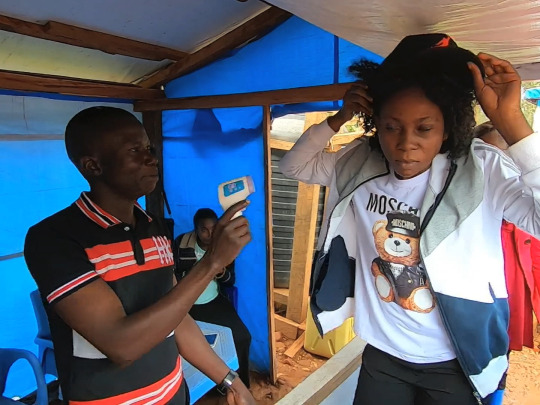
Beaten up and stoned for taking temperatures
Samuel Mutahwa was unemployed when the virus hit Butembo, but when the outbreak hit he volunteered to help. Now he plays a critical detective role of tracing contacts that could help break transmission.
Armed only with a thermometer, he leads his contact tracing teams through the neighborhoods of Butembo. Twice a day for 21 days — the maximum amount of time from time of infection to onset of symptoms — they follow up with their list of patient contacts.
Mutahwa entered the compound of a grandmother and grandson that visited a sick friend in hospital. The friend later died.


“36.8 — she is fine,” says Mutahwa, holding a thermometer up to the smiling woman.
But earning the trust of his own community has been a hard fought and dangerous process. In the early months, Mutahwa says that he was beaten up and stoned.
“They said they were going to kill me. But I said no, I know what I am doing. I have to save the life of my people,” he says.
Survivors part of the solution
Ebola is an intimate disease that is highly contagious but only contracted through direct contact.
It attacks families and then spreads through communities — often through so-called “super-spreaders” the 20% of cases that spread the disease to 80% of the people.
It is often the personal choices of Ebola victims that can have an outsized impact on the transmission chain.
When the sister of Roger Mumbere Wasukundi, 17, got sick earlier this year, he says nobody wanted to believe that she had Ebola. They didn’t even believe that Ebola existed.
After they buried his sister, his aunt got sick and quickly died. Roger, his mother, and his father all contracted the virus. Only Roger and his mother survived.
“I was sent to the treatment center because I didn’t want to give up. They told me I could survive and I believed them. Everyone prayed for me,” he says, sitting in his classroom in Butembo.
He still dreams of being a lawyer, but the virus still affects his health, his eyes clouded by the after effects of Ebola.
He believes that survivors like him can help turn the tide in the fight against Ebola and dispel the mistrust that has made the disease so hard to beat.
“Ebola survivors (need to) go talk to communities. Because this epidemic is very real,” he says.
Source link
#current health news usa#Fighting Ebola is hard but in the Congo mistrust is making it harder - CNN#Health#healthcare news usa#us public health news#Health News
0 notes
Photo

New Post has been published on https://fitnesshealthyoga.com/how-to-honor-the-roots-of-yoga-as-a-western-yogi/
How to Honor the Roots of Yoga as a Western Yogi

Christopher Dougherty
From self-realization centers and asana apps to T-shirts featuring Ganesh or puns on namaste, the Western world is full of yoga consumerism. We have a lot to gain from this ancient practice, but we also risk losing sight of, and appropriating, the culture and tradition yoga comes from. Here, five teachers, researchers, scholars, and activists weigh in on modern yoga and how we might practice and teach with more integrity and respect. The answers—and even the questions—aren’t always straightforward or easy, but as Honor (Don’t Appropriate) Yoga Summit creator Susanna Barkataki advises, lean in: “As you read the stories that follow, you may experience many emotions. You’ll hear various powerful perspectives from folks with Indian heritage and the impacts these issues have on their lives, families, culture, practice, pasts, and futures. Read these stories with an open heart and mind. Your yoga practice has prepared you for this by teaching you how to hold tension, breathe, and then break through. As you read, pay attention to your breath, body, and heart.” Then keep reading for suggestions on how we can address these issues together.
Thanks for watching!Visit Website
Thanks for watching!Visit Website
Thanks for watching!Visit Website

What’s the Difference Between Cultural Appropriation and Cultural Appreciation?
A first-generation Indian-American yoga and mindfulness researcher and teacher reflects on what feels misrepresented and appropriative to her in modern yoga.
Read here.
!function(f,b,e,v,n,t,s)if(f.fbq)return;n=f.fbq=function() n.callMethod? n.callMethod.apply(n,arguments):n.queue.push(arguments) ;if(!f._fbq)f._fbq=n; n.push=n;n.loaded=!0;n.version='2.0';n.queue=[];t=b.createElement(e);t.async=!0; t.src=v;s=b.getElementsByTagName(e)[0];s.parentNode.insertBefore(t,s)(window, document,'script','https://connect.facebook.net/en_US/fbevents.js'); (function() fbq('init', '1397247997268188'); fbq('track', 'PageView'); var contentId = 'ci024913c890002633'; if (contentId !== '') fbq('track', 'ViewContent', content_ids: [contentId], content_type: 'product'); )();
Source link
0 notes
Photo
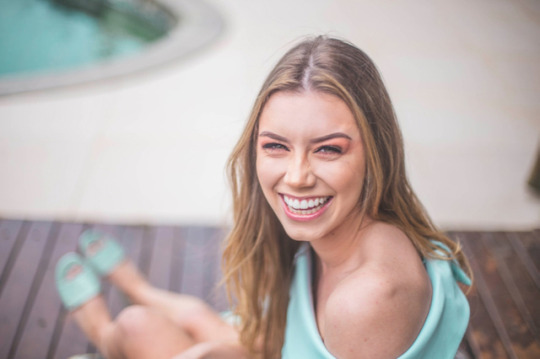
New Post has been published on https://fitnesshealthyoga.com/clearing-up-your-confusion-about-hormone-disrupting-chemicals-in-skin-care/
Clearing Up Your Confusion About Hormone-Disrupting Chemicals in Skin Care
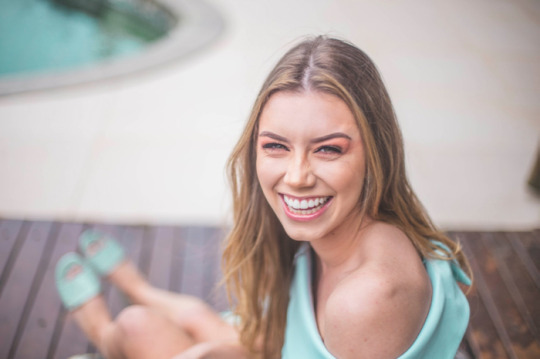
Women go through enough ups and downs because of hormones. We certainly don’t need more!
But depending on the skin care products you’re using, you could be inadvertently adding to the problem.
That’s because some skin care ingredients have been shown to mimic the action of hormones once they’re absorbed into the body.
What Are Hormones Anyway?
Our bodies are run by a complex and impressive group of hormones that together, make up what we call the “endocrine system.” These hormones are produced by a number of different glands in the body, including:
Pancreas
Thyroid
Adrenal glands
Ovaries
Hypothalamus (in the brain)
Pituitary gland (in the brain)
These glands produce more hormones when needed, and less when the body has an adequate supply. Hormones are chemical messengers that go out into the body and control various bodily functions, including hunger, reproduction, sleep, mood, stress and relaxation, growth, strength, and more.
When the body produces a healthy balance of hormones, everything works as it should and you go about your day happy and healthy. But small changes in the amounts—having too much or too little of a certain hormone—can cause noticeable symptoms or even health problems.
What are Endocrine Disruptors?
Endocrine disruptors or hormonal disruptors are chemicals that can interfere with the endocrine system in some way, throwing it out of balance. The disruption can occur in a number of ways, including the following:
The chemical mimics a natural hormone, fooling the body into responding to it as if it were real.
The chemical blocks the effects of a hormone, rendering it useless.
The chemical stimulates or inhibits the endocrine glands, causing them to overproduce or underproduce certain hormones.
There are a lot of chemicals and other substances that can cause these effects once they’re inside the body. These include:
Pharmaceutical drugs
Pesticides
Plasticizing chemicals like bisphenol-A (BPA)
Dioxins and dioxin-like chemicals
Polychlorinated biphenyls (PCBs)
Natural plant chemicals (like phytoestrogens)
We are exposed to these and other endocrine disruptors via:
Processed foods
Toys
Drinking water
Pesticides
Plastic bottles
Metal food cans
Medications
Detergents
Flame retardants
Cosmetics/personal care products
How Endocrine Disruptors Can Damage Health
When an endocrine disruptor gets inside the body, it can throw the delicate hormone balance out of whack. Potential problems that may occur include:
Developmental problems (in children)
Reproductive problems, including infertility
Nervous system problems
Endometriosis
Reduced immune function
Thyroid problems
Potentially increased risk of cancer
How to Limit Your Exposure to Endocrine Disruptors
It’s near impossible to completely avoid endocrine receptors in today’s world, but we can definitely reduce our exposure to them, thereby protecting our health.
We can start by taking these steps:
Avoid plastics—never reheat food in a plastic container, and use stainless steel water bottles
Avoid canned foods unless they are packed in BPA-free cans
Use safe household cleansers
Avoid processed and refined foods
Avoid pesticides and herbicides
Avoid non-stick cookware—the coating has endocrine disrupting chemicals
Filter your tap water
When buying furniture, including mattresses and carpet padding, ask about fire retardants; avoid stain- and water-resistant types, as they contain PFCs
Choose organic produce as frequently as possible, particularly when eating the peel (organic has fewer pesticides than conventionally grown produce)
Next, check your personal care products for hormone-disrupting ingredients.
Endocrine-Disrupting Skin Care Ingredients to Avoid
All of the following cosmetic ingredients have been linked with hormone-disrupting action.
Parabens: They are preservatives found in many personal care products.
Fragrance: Personal care product fragrances are made up of many unknown ingredients that may be linked with hormone disruption. Use only products with natural fragrances.
Oxybenzone: Found in some sunscreens.
DEA/TEA/MEA: These are emulsifiers and foaming agents found in shampoos, body washes, and soaps.
Lead: Found in some hair dye and lipsticks.
Formaldehyde: Found in nail products, hair dye, and some fake eyelash adhesives.
Phthalates: Plasticizing chemicals found in nail polishes, hair sprays, perfumes, and colognes.
Butylated Hydroxyanisole (BHA): This chemical, along with butylated hydroxytoluene (BHT), is used as a preservative and are found in hair products, makeup, sunscreen, antiperspirants, perfumes, and body care products.
It can be difficult to tell if some of these ingredients are in a product, as they’re not always listed on the label. Your best approach is to purchase products only from those companies who purposely avoid hormone-disrupting ingredients.
Fortunately, there are many of them out there today thanks to smart consumers who are demanding safer products. We’re happy to be one of them—CV Skinlabs products proudly contain no hormone disruptors!
Did you know about hormone-disrupting chemicals in your skin care products?
Source link
0 notes
Photo

New Post has been published on https://fitnesshealthyoga.com/diet-depression-and-anxiety/
Diet, Depression, and Anxiety


Everyone has a downer of a day now and then. The kind where you just have the blues and are feeling low. Similarly, everyone has fears and things that induce nervousness. Find some dietary tips for how to boost your mood in our article How Nutrients Affect Mood and Behavior and the biological pathways they work through in our article This is Your Brain on Food. In this article, the focus is whether or not diet can help treat depression and anxiety.
Depression and anxiety often get lumped together because they share symptoms. An unpleasant situation could bring about both a sense of hopelessness and deep fear. The two are separate diagnoses though, and each has different variations. Treatment may include medications, therapy, and self-care, which includes diet, and is just as important as other forms of treatment.
Eating and Depression and Anxiety
You just crushed your workday, how do you celebrate? Your latest project proposal got rejected, your friend canceled plans last minute, and now you are home alone feeling down about your day. You go into the kitchen and…
We tend to eat a certain way because we feel a certain way, and likewise, we feel a certain way because of our eating habits. What we eat influences the production and suppression of neurotransmitters and hormones. Quite naturally, we tend to gravitate towards foods that boost levels of “feel-good” neurotransmitters, like dopamine, when we are down. But what comes first? The depression and anxiety or food choices? For depression and anxiety, the answer is likely neither; the relationship between diet and depression is bidirectional.
When diagnosed with depression or anxiety, we don’t have only a bad day or one day of jitters and fears. Depression and anxiety can become lifelong partners, which is why eating for mental health every day can play such a significant role in the treatment of these disorders and comes recommended by many doctors.
The Science of Diet and Depression and Anxiety
Uncovering the connections between diet, depression, and anxiety is complicated by comorbidity; depression and anxiety can accompany each other and other diseases and disorders.
The comorbidity of depression and anxiety and other diseases is pushing doctors to treat all of a patient’s concerns individually, rather than treat only the symptoms and side-effects of medications. It is also a call for further research.
Nutritional Psychology investigates how nutrients affect mood and behavior. Part of that research focuses on how our diets can be part of comprehensive treatment for depression and anxiety.

Diet as Part of Anxiety and Depression Treatment
Research suggests that diet and dietary improvement influence risk of depression and appearance of anxiety behaviors. Because depression is an inflammatory disease, an anti-inflammatory diet might contribute greatly to treatment.
Here is a list of foods, nutrients, and habits that play a role in depression and anxiety:
Sugar
Can cause increased anxiety-like behavior and cause withdrawal symptoms that can increase anxiety and lead to consuming more sugar. So pass on the sweets, and opt for healthy carbohydrates instead.
Irregular eating
Can contribute to uneven blood sugar levels, which can lead to anxiety- and depression-like symptoms. Altering diet to eat regular meals and maintain blood glucose levels helps alleviate anxiety symptoms.
Fat
A diet high in fat can lower anxiety symptoms and behaviors, but the type of fat matters. Trans and saturated fats do not yield the same results. Healthy fats, like Omega-3 fatty acids, play an important role in lowering the risk of depression and alleviating symptoms as part of an anti-inflammatory diet. Flax seeds, chia seeds, walnuts, and soybeans all contribute the Omega-3 fat ALA.
Antioxidants
Another key part of an anti-inflammatory diet that can also play a role in the treatment of depression and anxiety, which is linked to an overall lower level of antioxidants. Fill up on vegetables, fruits, nuts, and legumes to increase your antioxidant levels.
Zinc
Can help support depression treatment and plays a role in alleviating anxiety symptoms. Eat whole grains, broccoli, legumes, and nuts to get zinc into your diet.
Magnesium
Known to quell anxiety, get magnesium from similar zinc sources: nuts, legumes, leafy greens, seeds, and whole grains
Protein
On a macro-level, eat protein with every meal to help release dopamine, feel satiated, and release norepinephrine.
Tryptophan
Helps promote the production of serotonin, which plays a role in both anxiety and depression symptoms. Get tryptophan from chocolate, cheese, egg yolks, pineapple, bananas, oats, and tofu.
Probiotics
Keep a healthy gut-brain connection by feeding and maintaining your gut biome with foods like yogurt and sauerkraut.
Bottom Line for Diet and Depression and Anxiety
Eat mostly plants, choose healthy fats and carbs, make sure you get enough protein and stay hydrated. Avoid sugar and alcohol, which can increase inflammation and have unpleasant withdrawal effects. Also go easy on the caffeine, which can increase anxiety. Also, eat consistently to maintain healthy blood sugar levels.
Disclaimer: The information presented here, and on this site, is informative in nature and should never be construed or interpreted as a substitute for medical advice or an endorsement for any diet. No information on this site is intended to be instructional and should not be considered or used as a medical diagnosis or treatment. Each person is different, and the way your body responds to a particular diet may be significantly different from the way other people respond. You should speak with your physician or healthcare professional before starting any diet or exercise program.

(function(d, s, id) var js, fjs = d.getElementsByTagName(s)[0]; if (d.getElementById(id)) return; js = d.createElement(s); js.id = id; js.src = "http://connect.facebook.net/en_US/all.js#xfbml=1&status=0"; fjs.parentNode.insertBefore(js, fjs); (document, 'script', 'facebook-jssdk'));
Source link
0 notes
Photo
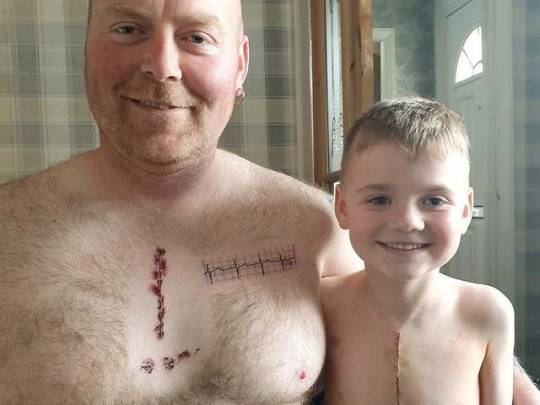
New Post has been published on https://fitnesshealthyoga.com/father-gets-tattoo-on-chest-to-match-sons-heart-surgery-scar/
Father gets tattoo on chest to match son’s heart surgery scar

A father has had a tattoo inked on his chest in tribute to the scar his son sustained during life-saving heart surgery.
When Leanne Watts was 28 weeks pregnant with her son, Joey, she was informed he had a rare condition called supravalvular aortic stenosis.
The heart defect causes the large vessel which carries blood from the heart to the rest of the body to narrow.
We’ll tell you what’s true. You can form your own view.
From
15p
€0.18
$0.18
USD 0.27
a day, more exclusives, analysis and extras.
Subscribe now
On 23 May, six-year-old Joey, from Beverley, East Yorkshire, underwent an eight-hour operation at Leeds Children’s Hospital to widen the blood vessel, a procedure which came with a one-in-10 chance of survival.
The surgery, which has proven successful for Joey so far, resulted in him acquiring a 9cm scar down the centre of his chest.
Martin and Leanne Watts found out about Joey’s heart defect 28 weeks into Mrs Watt’s pregnancy (SWNS)
“When Joey saw the scar, he just said, ‘Is this where they have cut me to fix my heart?'” Mrs Watts said.
“We’ve told him it should be something to be proud of and he shouldn’t be ashamed by what has happened to him.
“All of these warriors should be proud of their scars and all they achieve in life.”
On 29 May, the day after Joey was discharged from hospital, his father, Martin Watts, went to a local tattoo parlour to have a copy of his son’s scar tattooed on his chest.
‘We’ve told him it should be something to be proud of and he shouldn’t be ashamed by what has happened to him’ (SWNS)
Mr Watts also had his son’s heartbeat tattooed on his chest to the right of the scar design.
The Watts family are supporting the “#ScarSelfie” campaign being promoted by the Children’s Heart Surgery Fund (CHSF), which is encouraging patients of heart surgery to share pictures of their scars on social media.
The campaign also encourages donations to CHSF, which provides aid to the Leeds Congenital Heart Unit at Leeds Children’s Hospital.
“We fully understand that showing a scar picture is a very personal decision and not for everyone,” said Sharon Milner, CEO of CHSF.
“We are blown away by the bravery and resilience of the hundreds of CHD patients who undergo open-heart surgery and life-saving procedures at the Leeds Congenital Heart Unit every day – like Joey.”
(SWNS)
Joey’s older brother, seven-year-old Harley, was diagnosed with the some condition when he was 14 weeks old.
Harley is due to undergo the same surgery later this year, while Joey will require three further operations to widen his pulmonary branches and stretch his blood vessels.
“You take comfort from the way surgeons at Leeds handled things with Joey,” Ms Watts said. “It will be just as scary but they have given you reason to believe.
“I thought superheroes wore capes, they don’t, they wear surgical scrubs and gowns.”
Support free-thinking journalism and subscribe to Independent Minds
Supravalvular aortic stenosis is linked to William’s Syndrome, a congenital disorder which can cause heart issues.
“It’s a very rare condition and is linked to William’s Syndrome. For some reason, the boys don’t have William’s Syndrome but they have the heart condition of a child with William’s,” Mrs Watts explained.
Source link
#Health & Families#health news united states#health news usa today#latest health news usa#Lifestyle#tattoos#Health News
0 notes
Photo

New Post has been published on https://fitnesshealthyoga.com/researcher-behind-smartphone-horns-study-sells-posture-pillows-quartz/
Researcher behind smartphone “horns” study sells posture pillows — Quartz
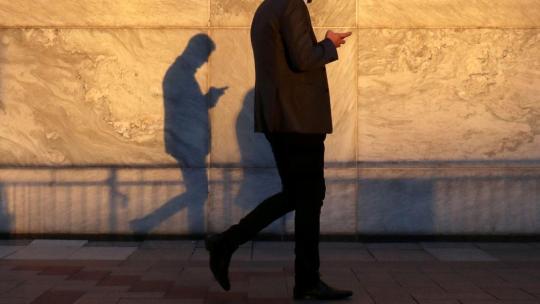
Smartphones are a modern hypochondriac’s favorite scapegoat: They’ve been blamed for our trouble sleeping, socializing, and focusing. Recently, news coverage of a scientific study has suggested that craning to read a smartphone may even contribute to the growth of “horn-like” bone spurs on the base of the skull.
If you’re skeptical, you have good reason: Scientists and journalists have called out the study for its dubious methods, which examined x-rays for evidence of tilted necks and skull spurs. There’s plenty to dispute in the paper’s design and conclusions. But aside from the science itself, there’s another reason to question the paper’s conclusion: the lead author’s business ventures.
David Shahar, one of the study’s authors, is a chiropractor and biomechanics PhD. So when it came time to find the 1,200 participants for his research, he didn’t look far: Based on the data associated with the paper available on his university’s website, every one came through his own chiropractic practice in Australia. That detail isn’t in his paper, which only refers to participants chosen from a clinician’s database.
That clinician is Shahar, who, along with his spouse and business partner, treat what they call a “poor posture epidemic” with digital posture analyses and on-site x-rays. In an email to Quartz, Shahar declined to comment when asked directly if the participants were coming through his practice. Instead, he said that about half of the young adults in his “original research were asymptomatic participants who were recruited by another researcher for a different project,” but did not elaborate on their specific ages or number of these participants.
If you really wanted to get a look at the effects of smartphone use on neck health, you’d want data from the general population, not people who were already concerned about neck or back pain. The paper acknowledges that issue, and excludes any patients who reported severe neck pain. But it doesn’t state that the patients came from Shahar’s personal practice, who may have skewed the data because they explicitly sought help with their posture.
Shahar is also the creator of Dr. Posture, an online store that advertises information and products related to forward head posture. One section tells users how to “look and feel your best in three easy steps,” which include watching a video by Shahar, downloading at-home exercises, and sleeping with a Thoracic Pillow, which Shahar has trademarked and sold for $195.
Most scientific publications require researchers to disclose financial conflicts. Scientific Reports, the open-access, peer reviewed journal where Shahar’s work was published, is no exception. Its policy requires authors to report anything that could “directly undermine, or be perceived to undermine, the objectivity, integrity and value of a publication.” Shahar declared no competing interests.
When Quartz visited Dr. Posture on June 21 from the US, the “products” section was empty. The Australian link, however, shows the Thoracic Pillow is available for purchase. It seems possible Shahar could earn money from people buying products for postural troubles—the US product page was live as recently as 2016—or gain notoriety.
When asked about this conflict of interest, Shahar told Quartz that “I have been largely inactive in that front over the years of my research, and this research does not discuss any particularly related intervention methods.” Yet a section of the discussion section of the paper reads “the mitigation of poor postural habit through prevention intervention may be prudent.”
It’s important to understand whether and how technology could be changing our bodies. It’s also critical to pay attention to what motivates research into those questions and shapes data analysis. In this case, the study’s conclusion didn’t match its reported results—a bizarre fact that some news outlets and individuals picked up on.
Business ties don’t automatically bias a scientist’s conclusions. But they should always raise a red flag for technology users trying to make healthy decisions in a world prone to profitable, postural panic.
Source link
0 notes
Photo

New Post has been published on https://fitnesshealthyoga.com/yoga-and-fatherhood-6-yogi-dads-to-follow-on-instagram/
Yoga and Fatherhood: 6 Yogi Dads to Follow on Instagram


1. JahSun
“If you’re seeing this, it means you have a father. I had one too. He’s was a brilliant chemist of a top firm in NJ. Seen him twice my entire life. I’m thankful he made me. Truly! As much I longed to see him more as a kid, The Universe knew what I needed and having him more fully in my life could’ve been more damaging. Who knows? Doesn’t matter. What I do know it that’s it’s perfect – as is – and I wouldn’t want it any other way. I wouldn’t be me otherwise. So, today, I’m not simply offering up some generic “Happy Father’s Day” to all fathers. Because being a “Father” takes very little skill, 3 minutes behind a school bleacher at age 15-16 (some start younger than that) – if we’re keeping it real like adults. I’m raising the bar. Elevating the standard. I’m unwilling to continue to celebrate the bare minimum. Honoring men with zero, or little connection to their children and send money like they’re paying a car note. In and out, when it suits them, like a revolving door at a hotel. Instead, I’m standing up to SALUTE ALL DADS! Men who are there, present and CONSISTENT for their children (and being with Mom is not a requirement to be available for your baby). MEN who have taken up the mantle to raise another man’s child (that they left behind), and became Dad for them. I stand up and SALUTE ALL MOMS doing double duty as BOTH parents. I was a single dad for 5 years, so I don’t empathize – I sympathize because I did it too. Real life experience. The pain of that hurts on levels many can’t comprehend. So, I see you, and I’m proud of you! For the True DADS of all genders, skin colors and geographical location – SALUTE! Keep up the amazing work. Our children deserve nothing less!”
Thanks for watching!Visit Website
Thanks for watching!Visit Website
Thanks for watching!Visit Website
2. Aubert Bastiat
“3/8/2019. Today I’m celebrating Cairo’s 1 year on this earth. Today I’m celebrating beautiful @divinedavana who I love more everyday. Today I’m celebrating my mother, my sisters and the Sacred Feminine in all Her expressions.
I celebrate not by word alone but by holding the highest vision and I do so through love, intention and action. Although it’s only been a year since Cairo was born truly this last year has been the most EPIC of my entire existence. It was after becoming a father to Cairo at 33 that my vision became grounded to this earth in such a way that the manifold expressions of my service to this world crystallized into a singular focus – anchoring the Sacred Masculine to this earth. Because there is no greater gift that I can give to my family, community and this world than embodying the Sacred and anchoring it to this earth through every aspect of my life.”
3. Alonzo Nelson Jr. M.Ed
After 9 months and 41 hours of labor, my princess has arrived. April 10th at 6:43pm, Harper Renee Nelson made her grand entrance into my life. Fatherhood is my new favorite job. Sorry math!”
4. Brian Delmonico
I didn’t know what to expect when Mia Luna was born. Like any new parent to be I received a love blast like nothing else I’ve ever experienced before. Holding her, calming her, changing her, smelling her, and loving her is a feeling I don’t think I could ever put into words. [The first two weeks of her life] changed my world, and brought new meaning to every moment of my life.”
5. Adam Jackson
“Listening to music with Noah makes me hear it differently. I can hear it for the first time through him. We’re doing a little dance here. I want to show him everything. I can’t wait for him to show me everything.”
6. Peter Maldonado
My favorite girl. Being a dad to such a gentle delicate little kid like her comes with challenges. Sometimes I have no clue what I’m “supposed” to be doing with her. I just make sure she’s fed, clean, and genuinely happy. I feel like she teaches me way more about life than I teach her. Grateful that recovery has enabled me to be the best dad I can be to this kiddo. Because she’s pure love and deserves the best.”
!function(f,b,e,v,n,t,s)if(f.fbq)return;n=f.fbq=function() n.callMethod? n.callMethod.apply(n,arguments):n.queue.push(arguments) ;if(!f._fbq)f._fbq=n; n.push=n;n.loaded=!0;n.version='2.0';n.queue=[];t=b.createElement(e);t.async=!0; t.src=v;s=b.getElementsByTagName(e)[0];s.parentNode.insertBefore(t,s)(window, document,'script','https://connect.facebook.net/en_US/fbevents.js'); (function() fbq('init', '1397247997268188'); fbq('track', 'PageView'); var contentId = 'ci02495419400027db'; if (contentId !== '') fbq('track', 'ViewContent', content_ids: [contentId], content_type: 'product'); )();
Source link
0 notes
Photo

New Post has been published on https://fitnesshealthyoga.com/red-white-and-blueberry-fruit-skewers/
Red, White, and Blueberry Fruit Skewers

It’s time to celebrate the Fourth of July! A holiday that comes with a ton of not-so-healthy food choices—where the buffet tables at barbecues and picnics aren’t the best place to find food that aligns with your healthy diet—and that’s not even mentioning all the fare at the deep fried-everything stands at our local Independence Day community celebrations. It’s almost like these summer holidays are trying to derail your healthy eating!
But no fears, you can easily get back on track by taking control of your eating destiny—bring your own healthy eats whenever you go celebrate. Not only are you guaranteeing you’ll have a healthy option to nosh on, but you’re also sharing your clean eats with all those folks you love. And in the case of these patriotic, festive skewers, you’ll be the hit of the party! So skip the cookies with red, white and blue sprinkles — instead, show folks that natural foods can be just as patriotic as those empty calorie treats!
Red, White, and Blueberry Fruit Skewers
Makes 9 skewers

Ingredients
3 large bananas, cut into 1” pieces
13 large strawberries, hulled and cut in half
About ½ cup blueberries
9 wooden skewers
Directions
For five of the skewers, string on one strawberry half, followed by a banana piece, followed by another strawberry half, and then another banana piece. Fill the remaining half of the skewer with blueberries.
For the remaining four skewers, string on a strawberry half, followed by a banana piece, and repeat until the skewer is full. Place the skewers in the order shown on a platter. Serve immediately.
Cook’s Notes
If serving a crowd, double or triple the recipe and just stack the skewers on top of one another to maintain the flag layout.
If not serving immediately, you can keep the bananas from browning by dipping them in a solution of 1 cup water and 2 tablespoons lemon juice before putting on the skewers.
Approximate nutrition per skewer: 53 calories, 0.1g fat, 13.5g carbs, 0.7g protein
What’s your favorite thing to do on the Forth of July?

Comments
(function(d, s, id) var js, fjs = d.getElementsByTagName(s)[0]; if (d.getElementById(id)) return; js = d.createElement(s); js.id = id; js.src = "http://connect.facebook.net/en_US/sdk.js#xfbml=1&appId=218896028281249&version=v2.3"; fjs.parentNode.insertBefore(js, fjs); (document, 'script', 'facebook-jssdk'));
Source link
0 notes
Photo

New Post has been published on https://fitnesshealthyoga.com/plant-based-diet-successfully-sends-crohns-disease-into-remission/
Plant-based diet successfully sends Crohn's disease into remission

Crohn’s disease, an inflammatory bowel condition that can be incredibly painful, may go into full remission under a plant-based diet, at least according to the results of a recently published case study. The case study involved a man in late 20s who suffered from Crohn’s disease before switching to a plant-based diet free of processed foods, after which point the disease went into remission and healing was experienced.
The findings were recently published in the journal Nutrients, where researchers explain that more than a year of intravenous treatment had not been able to send this man’s condition into remission. However, positive changes took place when the unnamed patient switched to a plant-based diet over a 40-day period of religious observation.
During that time, the patient’s symptoms, including severe abdominal pain and fatigue, completely disappeared. Due to that change, the patient decided to stick with the plant-based diet, which is described in the study as completely devoid of animal products as well as processed foods.
The diet included legumes (beans, lentils, peas, etc), fruit, vegetables, and whole grains. According to researchers, the patient’s Crohn’s disease entered into full remission during that time and tests found ‘complete mucosal healing.’ The unnamed man was able to stop taking his medication and did not experience any relapses while on the diet.
The precise reasons for remission on a plant-based diet remain unclear, but researchers point out that the higher fiber intake — which promotes beneficial gut bacteria — may be a contributing factor. Past research has found that processed foods and meats, particularly red meat, has an inflammatory effect on the body, which may exacerbate the inflammatory condition.
Source link
0 notes
Photo
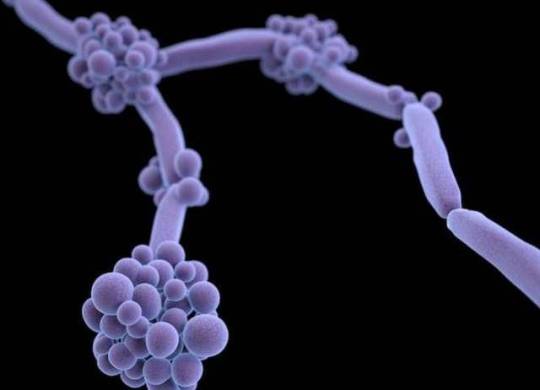
New Post has been published on https://fitnesshealthyoga.com/combination-of-drugs-may-combat-deadly-drug-resistant-fungus/
Combination of drugs may combat deadly drug-resistant fungus


Candida albicans, which is related to Candida auris. Credit: CDC
As health officials in New Jersey, Illinois and New York State scramble to contain the spread of a highly infectious and deadly fungus, microbiologists at Beth Israel Deaconess Medical Center (BIDMC) have shown that a combination of anti-fungal and anti-bacterial medications may be an effective weapon against the recently discovered multidrug resistant, Candida auris (C. auris).
BIDMC’s Thea Brennan-Krohn, MD, presented the findings Friday, June 21, 2019, at ASM Microbe 2019, the annual meeting of the American Society for Microbiology.
“Few treatment options are available for patients infected with Candida auris, which causes invasive, life-threatening infections, usually in patients who are already critically ill or have compromised immune systems,” said Brennan-Krohn, MD, a post-doctoral research fellow in the lab of James E. Kirby, MD, Director of the Clinical Microbiology Laboratory at BIDMC. “It has an alarming propensity to spread from patient to patient and survive on surfaces in rooms, resulting in hospital outbreaks.”
First discovered in Japan in 2009, C. auris has been detected in patients in more than 20 countries and, as of April 2019, has sickened 643 Americans in 11 U.S. states, according to the U.S. Centers for Disease Control and Prevention (CDC). At present, most cases of C. auris are resistant to at least one antifungal drug, with about a third impervious to two or more.
In order to identify new treatment approaches for C. auris, Brennan-Krohn and colleagues used a modified inkjet printer—a method pioneered for rapid and uniform antimicrobial screening in the Kirby lab—to test three antifungal drugs, one from each of the main classes of antifungals, combined with two antibacterial antibiotics, which by themselves have no activity against fungal infections.
Using the inkjet technology to dispense uniform samples of C. auris into each of the 96 wells in a standard lab testing plate, Brennan-Krohn tested 10 combinations against 10 strains of C. auris, a painstaking process that would have taken at least 50 hours if done by hand. It took less than two hours in total using the inkjet dispenser for Brennan-Krohn to find three novel combinations of antifungal and antibacterial drugs that demonstrated activity against this insidious new pathogen.
Using a different method known as a time-kill test, Brennan-Krohn showed that two of the antibacterial-antifungal treatments not only prevented C. auris from growing but also succeeded in killing some of the strains tested.
While the drugs have not yet been tested in combination in humans infected with C. auris, all of the drugs Brennan-Krohn evaluated—the antifungals amphotericin and caspofungin and the antibacterials minocycline and rifampin—are FDA-approved antibiotics, currently in use patients with a variety of infections. If the drugs’ combined power to inhibit or kill C. auris that they demonstrated in the lab is confirmed in studies in humans, it could mean physicians caring for patients with C. auris infections already have access to effective treatment options.
CDC: Superbug fungus has sickened 600 Americans
Provided by
Beth Israel Deaconess Medical Center
Citation:
Combination of drugs may combat deadly drug-resistant fungus (2019, June 22)
retrieved 24 June 2019
from https://medicalxpress.com/news/2019-06-combination-drugs-combat-deadly-drug-resistant.html
This document is subject to copyright. Apart from any fair dealing for the purpose of private study or research, no
part may be reproduced without the written permission. The content is provided for information purposes only.
Source link
0 notes
Photo
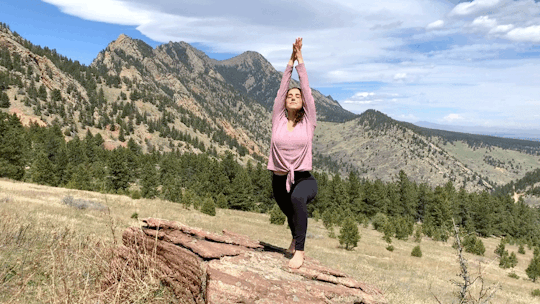
New Post has been published on https://fitnesshealthyoga.com/best-all-natural-supplements-for-stress-and-fatigue/
Best All-Natural Supplements for Stress and Fatigue


Brandon and Lauren have never experienced a road trip tour like this before. They are quickly learning that being on the road can lead to unexpected stress and fatigue – that is why they are both making it their goal to stick to their daily routines. Gratitude to our supplement sponsor, Nature’s Way, for supplying Brandon and Lauren with products that harness the best that nature has to offer, helping them on their yoga and wellness journey across the U.S.
For more information on Nature’s Way, please visit NaturesWay.com.
Live Be Yoga ambassadors Lauren Cohen and Brandon Spratt are on a road trip across the country to sit down with master teachers, host free local classes, and so much more—all to illuminate the conversations pulsing through the yoga community today. Follow the tour and get the latest stories @livebeyoga on Instagram and Facebook.
!function(f,b,e,v,n,t,s)if(f.fbq)return;n=f.fbq=function() n.callMethod? n.callMethod.apply(n,arguments):n.queue.push(arguments) ;if(!f._fbq)f._fbq=n; n.push=n;n.loaded=!0;n.version='2.0';n.queue=[];t=b.createElement(e);t.async=!0; t.src=v;s=b.getElementsByTagName(e)[0];s.parentNode.insertBefore(t,s)(window, document,'script','https://connect.facebook.net/en_US/fbevents.js'); (function() fbq('init', '1397247997268188'); fbq('track', 'PageView'); var contentId = 'ci0248ad6010002709'; if (contentId !== '') fbq('track', 'ViewContent', content_ids: [contentId], content_type: 'product'); )();
Source link
0 notes
Photo

New Post has been published on https://fitnesshealthyoga.com/the-medical-student-who-died-of-measles/
The medical student who died of measles
Image copyright
Oksana Butenko
Until recently health authorities thought they had almost eliminated measles from Europe. But now the potentially deadly illness is on the rise because of a dramatic fall in vaccination rates. Worst hit is Ukraine, now suffering the one of the worst measles epidemics in the world, with more than 100,000 cases since 2017.
On an autumn day in 2017, Oksana Butenko waved goodbye to her teenage son Serhiy as he set off for university to study to become a doctor.
Eighteen months later, in February this year, she brought his body back to her small village in western Ukraine in a coffin.
The young man who wanted to devote his life to curing people of diseases had himself died at age 18, suddenly, of an illness health authorities say is completely preventable – measles, a disease they thought, a few years ago, they had almost eradicated in Europe.
Image copyright
Oksana Butenko
Image caption
Serhiy Butenko died of pneumonia brought on by measles
“He was a brilliant boy,” Oksana says, standing outside the little silver-domed village church where her son’s funeral was held. “He was the most precious thing I ever had. It was his dream to become a medic, that’s what he lived for.
“I don’t know why it happened. I remember my childhood, everyone got measles, but they all recovered.”
Measles is a highly contagious disease that most people get over after a couple of weeks of high temperature, and an unpleasant skin rash. But in a few cases – one or two in a thousand – it leads on to fatal complications, most commonly pneumonia.
Serhiy died of pneumonia brought on by measles after several days in intensive care, infection eating away at his lungs, unable to breathe without artificial ventilation.
He was one of 39 people to have died of measles in Ukraine since the current outbreak began in 2017.
Measles has been surging across Europe, with the number of new cases tripling last year to 82,596. The majority of those were in Ukraine, with 53,218 catching the disease.
Image caption
Ukraine has seen a surge of measles cases in the last two years
“We have this perfect storm of what happened over the last 40 years and it’s culminated in the problem that we have now,” says the country’s acting health minister, Ulana Suprun. She’s talking about the dramatic decline in the proportion of people who are protected against measles by vaccination.
Until about 2001, she says, Ukraine imported a strain of vaccine from Russia that the World Health Organisation (WHO) later declared to be ineffective. As a result, “about 44% of the measles cases in Ukraine are adults – adults who thought that they had been vaccinated, but the vaccine was not useful”.
Then there was a problem with the cold chain – keeping the vaccine refrigerated so that it remains effective. Amid the economic collapse that followed the break-up of the Soviet Union in 1991, with poorly-equipped hospitals and unreliable energy supplies, the vaccine wasn’t always kept at the correct temperature.
Image caption
Oles Pohranychny: Distrust of vaccination reflects wider malaise in society
But an even greater problem was psychological. As the years went on, more and more people refused vaccination for themselves, or their children.
“It’s a question of trust,” says Oles Pohranychny, headmaster of a private primary school in the western city of Lviv. Two years into the epidemic, only half his pupils are vaccinated against measles.
“Vaccine is something that I take, and believe that it will protect me against something. Now our school has the children of parents born in the 1990s, when no-one believed anything. Not one another, not medicine, not the state.
“In the whole former Soviet Union, it was a period of transition from a paternalistic society, to a society where you are responsible for yourself – but you don’t know how to be responsible for yourself. Everyone around was lying – that’s what people thought in the ’90s. You had to be like a clenched fist, and trust no-one. Otherwise you were a loser. Trust was for losers.”
Dr Suprun, the acting Health Minister, blames the media and politicians for fanning the anti-vaccination mood, particularly after a widely-publicised incident in 2008 when a schoolboy called Anton Tishchenko died shortly after being immunised against measles – though a medical report later showed that his death was unconnected to the vaccine.
Find out more
Listen to Dying from Mistrust in Ukraine, Tim Whewell’s report for the BBC World Service’s Assignment programme on BBC iPlayer
In the wake of that tragedy, vaccination rates fell so drastically that by 2016 only 31% of the population were covered by MMR, the main vaccine against measles, mumps and rubella – the lowest level of vaccination in the world, even lower than in Africa, as Dr Suprun put it.
The WHO recommends 95% of children should be immunised with the MMR vaccine to achieve the herd immunity level at which all children – vaccinated and unvaccinated – are protected from measles, mumps and rubella.
Image caption
Ukrainian soldiers line up for vaccination
Dr Suprun says that even now she is fighting a tide of misinformation. “We have politicians trying to get votes saying that you don’t need to be vaccinated, it’s all a big plot by Western governments to take over the minds of our children, that vaccine is a big plot by pharmaceutical companies to come in and make a lot money off of Ukraine. Unfortunately, even with 39 deaths, it’s difficult to convince people that this is a real problem.”
The death of Serhiy Butenko, however, did jolt his fellow students at Vinnitsa Medical University, in central Ukraine.
“There was a feeling of emptiness,” says Oleh Yefymenko, head of the student council. “A lot of people knew him, really his story touched everyone.”
Medical records show that Serhiy had been vaccinated, at the ages of one and six, as recommended by the health authorities. But it wasn’t enough to protect him, because he caught the measles virus just after being taken ill with another viral disease – mononucleosis, or glandular fever.
“This mononucleosis weakened his immune system, so that it could not fight properly against the measles virus,” says Dr Alexandra Popovich, who oversaw Serhiy’s treatment in his last days.
It’s possible that he would have been better protected if he had had a recent booster jab of vaccine.
But the more important lesson to take from the tragedy, says Dr Popovich, is that Serhiy would not have died if he hadn’t been exposed to measles in the first place, if the level of herd immunity in the population had been high enough.
After Serhiy’s death many of his fellow students rushed to get vaccinated, according to student leader Oleg Yeminenko.
Image caption
Oleh Yefymenko says Serhiy’s death shocked fellow students
But how come medical students, future doctors, hadn’t thought of that long before? By that time the measles outbreak had been raging for nearly two years.
The University authorities told the BBC they conducted a major campaign last year to encourage students to get jabbed, and achieved a vaccination rate of more than 98%.
They said students are taught about vaccination “from the point of view of evidence-based medicine, studying immunology, statistical data, contra-indications and consequences.”
But Kateryna Bulavinova, of the United Nations children’s agency UNICEF, which has been helping the Ukrainian government in the fight against measles, said Serhiy Butenko’s death showed that university deans are not doing enough, in general, to protect students.
“In my personal opinion this is a horrifying situation because it was preventable,” she said. “For me, it’s a big mystery, because it’s the third year of outbreak in Ukraine with huge figures of those who contracted measles. But still the deans of all medical universities didn’t take their position about protecting students.”
“The biggest issue is with health care workers themselves. We have got more and more young doctors who have no idea about immunisation, or doubt immunisation, or are against immunisation.”
The health minister Ulana Suprun also believes doctors themselves are the main spreaders of doubt about vaccines.
Image caption
Some doctors in Ukraine are taught non vaccination helps a child in the long run
She says that some student doctors are taught that vaccinations are not necessary. The rationale is the belief that it is better for a child to contract the the disease, because then they will have immunity for the rest of their lives. “When you have academics at that level teaching new doctors that they don’t need to vaccinate the children, it really does confuse the issue,” Dr Suprun says.
The government’s chief paediatric immunologist, Dr Fedir Lapiy, says “We have professors who believe that vaccination against measles during the influenza season, October to May, for example, is a dangerous procedure because it will cause immunosuppression. That’s a myth, false information. It’s dangerous for the country.”
Dr Suprun says misinformation by health workers and medical academics cannot be stopped because universities are independent and there is currently no means to withdraw professional qualifications. But a system to license physicians that will make that possible is now being introduced.
Image caption
Dr Fedir Lapiy says some academics are spreading anti-vaccination myths
She says many of the problems that led to the epidemic are now being overcome. Vaccines are procured by Unicef, which has assisted the government in visiting hospitals and clinics to ensure the cold chain is maintained.
“The vaccines that have been given in the last year or two years, we know have worked,” she says. “We’ve vaccinated last year over 900,000 people and we had zero deaths or serious complications from the vaccine.”
Mobile vaccination brigades have toured the regions worst hit by the epidemic to immunise children who missed getting the jab. Free vaccination is also now available to all adults.
Last year, 90% of one- and six-year-olds were vaccinated against measles. But that still leaves a huge backlog of children, and adults, who failed to be vaccinated at the right time in earlier years.
And Unicef estimates that as many as 30% of vaccination certificates may be falsified.
“When parents are told that it’s required to vaccinate their children to have them come to schools, they then go to physicians and unfortunately buy vaccine certificates,” Dr Suprun says.
In Lviv region, the worst-hit, she says, “when we came into the (regional) department of health and asked them how many children will need to be vaccinated, they told us by their records it’s 22,000. But when we went to the schools, and we verified which records were accurate, we found that it was 50,000 children that needed to be vaccinated, because 28,000 had fake vaccine certificates.”
Image caption
Campaigner Veronika Sidorenko has not vaccinated her children
By law, Ukrainian children have to be vaccinated against certain diseases, including measles, in order to attend state schools. But the law is not always observed, and it is also contested by some parents including Veronika Sidorenko, founder of a movement called “Vaccination – Free Choice.”
Her three children are unvaccinated. “When I compared the risk of getting the disease, against which we vaccinate, and the risk of the consequences of vaccination, I decided not to vaccinate,” she says.
According to the WHO, the risk of suffering a severe allergic reaction to the measles virus is one in a million. But Veronika mistrusts WHO statistics. She thinks the campaign for universal vaccination is driven partly by lobbying by the pharmaceutical industry.
“If we had large scale research – let’s say 1,000 non-vaccinated children and 1,000 vaccinated ones, and we could trace their life through 50 years – we could actually assert that [vaccination prevents measles outbreaks]. But we don’t have that and no-one is going to do it, so I believe we can’t say for sure.”
When challenged that her choices are putting other children in danger, she says she doesn’t believe in herd immunity.
In the meantime, the epidemic in Ukraine is continuing to gain pace, with almost as many new cases in the last six months as in the whole of last year. The 39th victim of measles complications died this month.
“This is the era of iPhones, and all kinds of high technologies,” says Unicef’s Kateryna Bulavinova.
“To have this high a number of people dying of a completely preventable disease is horrible.”
You may also be interested in:
Polio: The final battle
The battle to persuade Pakistan’s people of the benefits of polio vaccination – in one of only three countries where the disease is still rife.
Source link
0 notes
Photo
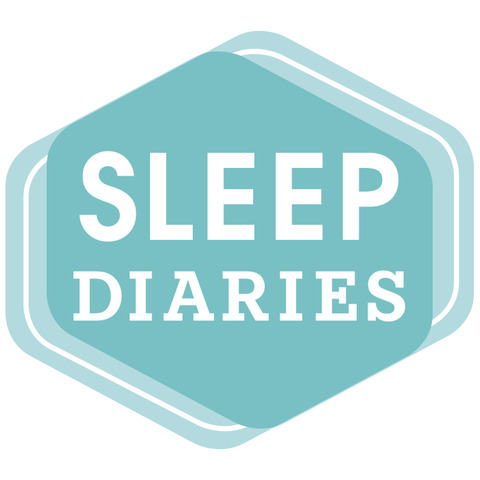
New Post has been published on https://fitnesshealthyoga.com/a-wellbeing-entrepreneur-says-his-gravity-blanket-is-his-new-favorite-sleep-hack/
A Wellbeing Entrepreneur Says His Gravity Blanket Is His New Favorite Sleep Hack

Welcome to Sleep Diaries, where interesting people share a week’s worth of late-night habits. They’ll tell you, the reader, how they wrap up their day, how they get to sleep, stay asleep or fall back asleep, and how they feel when they wake up in the morning. Why? Because sleep is America’s Most Wanted thing. We chase after it like an elusive elixir that’ll make us look younger and feel less stressed. (Maybe because it will.) We thought by getting people to share what works for them—and doesn’t—it might help you find better ZZZs. Or at least give you something entertaining to read. This week, we have Brett Kaufman, founder of Kaufman Development and the Gravity Project, a collection of apartments and work spaces with all the components to mental wellbeing—like therapy, acupuncture, yoga, and more—built into the design.
CHECK PREVENTION.COM EVERY FRIDAY FOR MORE.
I am always working on closing my gaps, and optimizing my mind, body and spirit. I started Gravity as a way to figure out how to surround myself and others with the resources to be well more easily, more readily. More and more research seems to be coming out regarding disease being connected, to processed, low-quality foods, and even though we are socially-dependent beings, we are increasingly lacking a sense of connection and isolating ourselves through technology. So now I’m trying to figure out how we can trigger social connection, mental health recovery and physical wellness by creating intentional spaces. The creation of Gravity is my own experiment with building spaces that take care of us, soothe our nervous systems, and inspire us to be healthier.
For my sleep schedule, I have started to use a number of tools to make sure I get good, quality sleep. I travel a ton for work, but when I’m home, I use a gravity blanket, which is my new favorite sleep hack. It’s both weighted and cooling. And I am devoted proselytizer of CBD. I use Plant Alchemy CBD. It’s the best I’ve found in terms of quality, since it’s biodynamically farmed, and it tastes great. It helps me let go of the day, and gets my system back into pre-sleep state. I use the Whoop app to track my sleep to measure how I’m doing, and to make sure I’m making up for sleep in a busier week. I have three teenage boys, and so home life is beautifully full and rich, and requires flexibility in everyone’s schedule. I do meditate every day, and I have for about 20 years. I got trained in Transcendental Meditation, and it has been a lifesaver. It rescued me from my mind. I can’t imagine what I would be like without meditation as my cornerstone practice. I’d be lost in my neuroses, and I definitely wouldn’t be sleeping enough.
Saturday: A relaxing night at home
A total of 6 hours and 48 minutes—a great night of sleep. If I’m getting close to 7 hours, I’m good. My wife, Katie and I stayed home, which we don’t usually do. We had a daytime wedding and decided to stay home and hang out with (supervise) our kids. We had a bunch of kids in our swimming pool for a while, and we were up watching the NBA finals. When it’s a home night, we tend to stay up until curfew, until everyone is back, and the kids have come back from wherever they’ve been, and checked in with us. The alarm is on, and we are comfortable calling it a night. On the weekends, Katie and I both stay up until lights out. Then, I can sleep in until my Sunday morning tennis game.
Kaufman’s bedroom
Courtesy of Brett Kaufman
Sunday: A crowded bed
A total of 6 hrs 13 minutes—a little light. Sleep is a little harder in the summer time with high school age boys. I was up a few times in the middle of the night, probably as a result of a heavy Sunday night dinner, and a few cheats at dessert time. I’m being very careful not to eat carbs or sugar before bed, and I gave up drinking. All of that interrupts my sleep, and so tonight, I’m off my wellness routine, and my sleep suffers. Also, my youngest found his way into our bed, which makes things a little crowded. I totally embrace it, because I know this phase is fleeting. This won’t last much longer, having him at the sweet age when he still wants the comfort of his parents. So even sleep takes a back seat to the experience of raising a family. My family is always #1, and the experience of being with them, I will always choose over a little extra sleep.
Monday: Bonus ZZZs
I watched the NBA finals with my sons. I always make exceptions at the right times—sometimes fun is more important than sleep. Definition of balance: Don’t be too far to one direction for too long, but sometimes it’s OK to be heavy on the fun. And in this case, the universe took care of me, since my yoga instructor canceled my morning session, and I got an extra hour of sleep, which I really needed. When the yoga instructor cancels, it’s like a snow day for adults.
Tuesday: A low-point for sleep
Not one of my better nights. Less than 6 hours of sleep. I still got an hour of deep sleep, but will need an extra espresso to make it through. Busy week of travel and pre-vacation, so it’s a bit hard to fit it all in sometimes. I did opt for early wake up to make sure I got my full mediation in and that I worked out today. Can’t let that slide too much, constant balance and listening to my body.
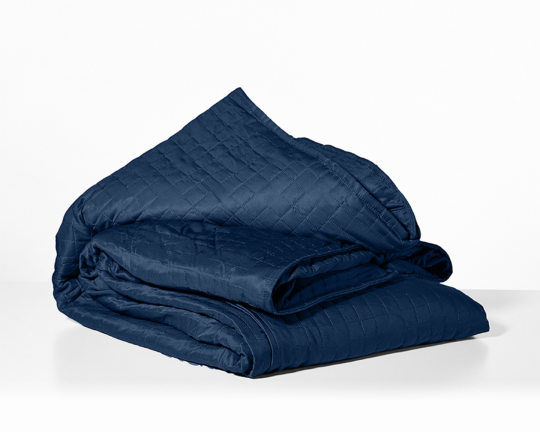
The New Cooling Blanket
gravityblankets.com
$259.00
Wednesday: Playing catch-up
Seven hours and 7 minutes of sleep. Traveling and on West Coast time, and so getting into bed at 10 p.m. and sleeping until 6 a.m. really helps. It’s amazing how much better you feel with a good 7+ hours of sleep. Ideally you have that feeling every day, but that’s just not where I am in life right now. It’s a busy week prior to leaving for vacation. Lots of significant opportunities and challenges running a business popping up right before vacation, which is always how it goes. And it’s perfect, I’m so blessed, it’s fun and so sleeping a little less isn’t a problem. It’s how you are with things that matters, not so much the thing itself. So be careful with the data, with the tools. When you get the 5-hour nights, don’t make it wrong. When you get a 7-hour night’s sleep, embrace the relief, don’t get too attached. It’s all perfect, and feeling the perfection, choosing gratitude, joy, compassion, love and light is always more powerful!
Thursday: Melatonin FTW
Another decent night of sleep: 7 hours and 22 minutes. Often, when I’m on the road, I’ve learned to be especially disciplined about what I eat, drink (or in this case, hydrate, since I’m in Arizona heat right now) and what time I go to bed. It’s usually a little more restless in a new surrounding, a hotel, different mattress, no gravity blanket, etc. Last night I took a melatonin to help me settle into some deep sleep. I ate a light meal, and went to bed at a decent hour. My internal clock is still on EST, so it wants to get up early which happened right on schedule. But rather than making it wrong, or spend time getting frustrated, I just settled into it softly and found myself able to fall back asleep. I don’t check the phone in those moments. I don’t get upset that I woke up. It makes it much harder to settle the mind and body. Then, when I get that extra few hours, it makes a world of a difference.
Stay updated on the latest science-backed health, fitness, and nutrition news by signing up for the Prevention.com newsletter here. For added fun, follow us on Instagram.
Devin Tomb
Devin is Prevention.com’s executive editor and has written everything from deeply reported features to well-curated gift guides (if she does say so herself).
Source link
0 notes
Photo

New Post has been published on https://fitnesshealthyoga.com/5-yogis-share-the-lessons-they-learned-from-traveling-the-world/
5 Yogis Share The Lessons They Learned From Traveling the World


From learning to love to finding their life’s purpose—these are the stories from yoga teachers who found meaning in their travels.
Source link
#Adventure Travel#Asia Yoga Travel#balance#Caribbean Yoga Travel#Europe Yoga Travel#Latin America Yoga Travel#Life#yoga asanas#yoga for beginners#Yoga Travel#Yoga Travel By Location#Yoga Exercises
0 notes
Photo

New Post has been published on https://fitnesshealthyoga.com/gut-brain-axis-may-be-bridge-linking-chronic-pain-with-microbiome-changes/
Gut-brain axis may be bridge linking chronic pain with microbiome changes
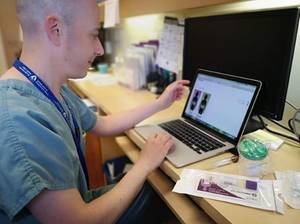
Writing in the journal Pain, the team discuss how butyrate metabolism-related bacteria populations such as Faecalibacterium prausnitzii and Bacteroides uniformis, decreased in fibromyalgia patients.
“We used techniques including Artificial Intelligence to confirm changes in the microbiomes of fibromyalgia patients were not caused by diet, medication, physical activity, age, and so on, which are known to affect the microbiome,” says study author Dr Amir Minerbi,
“We found that fibromyalgia and the symptoms of fibromyalgia – pain, fatigue and cognitive difficulties – contribute more than any of the other factors to the variations we see in the microbiomes of those with the disease,” adds Dr Minerbi, who is based at McGill University Health Centre (MUHC).
“We also saw that the severity of a patient’s symptoms was directly correlated with an increased presence or a more pronounced absence of certain bacteria – something which has never been reported before.”
A first time link?

Dr Amir Minerbi, first author on the paper, along with his colleagues, have found a correlation between a disease involving chronic pain and alterations in the gut microbiome. CREDIT: McGill University Health Centre
The team claim the trial establishes a link for the first time, in which they draw upon mounting evidence on gut microbiota’s role in metabolic, cardiovascular, neurologic and psychiatric disorders.
Strengthening a possible relationship is the existence of the ‘gut-brain axis’, which makes reasonable the hypothesis that it may also affect pain processing and perception.
Human studies have showed consistent gut microbiota alterations in individuals with irritable bowel syndrome (IBS) and individuals suffering from chronic dysfunctional pelvic pain.
Highlighted are similar observations in patients with chronic fatigue syndrome, rheumatoid arthritis and spondyloarthropathies in which researchers report microbiome alterations.
The McGill University team drew upon outcomes from a group of 156 individuals, 77 of whom suffered from fibromyalgia.
The team interviewed participants, who gave stool, blood, saliva and urine samples, which were then compared with those of healthy control subjects.
Some of these subjects lived in the same house as the fibromyalgia patients or were their parents, offspring or siblings.
“We sorted through large amounts of data, identifying 19 species that were either increased or decreased in individuals with fibromyalgia,” says McGill University’s Emmanuel Gonzalez, a fellow team member.
“By using machine learning, our computer was able to make a diagnosis of fibromyalgia, based only on the composition of the microbiome, with an accuracy of 87%.
“As we build on this first discovery with more research, we hope to improve upon this accuracy, potentially creating a step-change in diagnosis.”
Irritable Bowel Syndrome parallels

Human gut microbiome composition shows an enormous richness. Each circle represents a bacterial species, while the different colours mark different bacterial phyla. CREDIT: Dr Amir Minerbi
The team said the study demonstrated gastrointestinal tract microbiota alteration in patients with somatic (non-visceral) pain in general, and fibromyalgia in particular.
“Some of the differentially abundant taxa reported here are known to be involved in metabolic pathways whose effect on symptoms of fibromyalgia is biologically plausible,” the study continued.
“Moreover, there seems to be a quantitative correlation between the abundance of several taxa and symptoms severity.
“Finally, differentially abundant taxa in fibromyalgia patients share some commonalities with Irritable Bowel Syndrome (IBS), chronic fatigue syndrome (CFS) and interstitial cystitis (IC) – while retaining some unique differentially abundant taxa.”
The researchers suggested a series of opportunities to capitalise on the study results. These include exploring the mechanisms by which the gut microbiota may affect nociception.
Here, the possibly of trigger events, personal susceptibility and individual prognosis could also be an area worth looking into.
“The accuracy of microbiome-based machine learning classification suggests that the microbiome holds the potential to aid in the diagnosis of fibromyalgia in the future,” the study continued.
“Finally, if a causal relationship between gut microbiome alterations and FM is established, the way may be paved for the development of new treatment modalities targeting this fascinating community of intestinal microorganisms.”
Source: Pain
Published online: DOI: 10.1097/j.pain.0000000000001640
“Altered microbiome composition in individuals with fibromyalgia.”
Authors: Amir Minerbi, Emmanuel Gonzalez, Nicholas Brereton, Abraham Anjarkouchian, Ken Dewar, Mary-Ann Fitzcharles, Stéphanie Chevalier, Yoram Shir
Source link
#21#Gut/digestive health#health news united states#health news usa today#healthcare news usa#Inflammation#Probiotics#Probiotics and prebiotics#research#Health News
0 notes
Photo

New Post has been published on https://fitnesshealthyoga.com/toy-story-4s-ending-explanation-will-wreck-you/
‘Toy Story 4’s Ending Explanation Will Wreck You
It’s the end of an era. Toy Story 4 is the final chapter in the beloved franchise that began way back in 1995. The movie brings Woody, Buzz Lightyear and the gang back for one last adventure, but Toy Story 4’s ending meaning will bring you to your knees. Before we get into life lessons and super sad goodbyes, let’s dive into the plot. The film opens in 2010. During a moment of chaos, Bo Peep (Annie Potts) is taken away from the rest of the toys. Flashing forward to today, Woody (Tom Hanks), Buzz Lightyear (Tim Allen) and the gang are no longer Andy’s toys; now they are in Bonnie’s (Madeleine McGraw) possession. Unfortunately, the toys are in the same cycle as they were before with Andy. Bonnie has seemingly forgotten about them (especially Woody)–leaving him in the back of her closet.
Deciding to step out on fate–Woody hides away in Bonnie’s backpack and joins her on her first day of Kindergarten where he inadvertently helps her craft Forky–a terrorized spork (Tony Hale) that unwittingly becomes her favorite new toy. Despite every effort to weasel away from Bonnie and throw himself the trash, the little girl clings to Forky until he makes a grand escape that sends Woody off on quite the journey after him. So what does all of this mean?
Essentially, things have gotten out of Woody’s control. Though he’s always seen himself as the leader of the toys (and in this film he really stands at the center)– he no longer serves the same purpose that he once did. Before he and Forky embark on their adventure together, Woody’s new role seems to be to agitate and nitpick at the other toys. Since Bonnie is no longer playing with him, it’s the only way he knows how to feel a connection.
Image: Walt Disney Pictures.
When Forky comes into the fold, Woody finds a new purpose–making sure the spork-turned-toy doesn’t dump himself in the trash so that Bonnie remains happy. However, once Woody sets off after Forky, he discovers an old friend, Bo Peep, who has found a new lust for life as something other than an object for one child to love. In the end, Woody sacrifices his own happiness (or comfort) to leave behind Buzz and his crew and head off with Bo Peep to help other toys who have lost their purpose. Toy Story 4 is heartbreakingly real. It shows that life is full of adventures and ups and downs, and despite how much we may want it to–nothing last forever.
In the end, we must all choose the paths that are best for us, but with those choices, there will be sacrifices. The final movie in the beloved Toy Story franchise highlights that we all have a purpose in life, even if it seems fuzzy or muddled, we only need to set our mind on it before digging our heels in and doing the work to make the world a better place.
youtube
BRB sobbing to infinity and beyond!
!function(f,b,e,v,n,t,s)if(f.fbq)return;n=f.fbq=function()n.callMethod? n.callMethod.apply(n,arguments):n.queue.push(arguments);if(!f._fbq)f._fbq=n; n.push=n;n.loaded=!0;n.version='2.0';n.queue=[];t=b.createElement(e);t.async=!0; t.src=v;s=b.getElementsByTagName(e)[0];s.parentNode.insertBefore(t,s)(window, document,'script','//connect.facebook.net/en_US/fbevents.js'); // Insert Your Facebook Pixel ID below. fbq('init', '1130306277008218'); fbq('track', 'PageView'); (function(d)var id="facebook-jssdk";if(!d.getElementById(id))var js=d.createElement("script"),ref=d.getElementsByTagName("script")[0];js.id=id,js.async=true,js.src="https://connect.facebook.net/en_US/all.js",ref.parentNode.insertBefore(js,ref))(document)
Source link
0 notes